Randi Zuckerberg's Blog, page 21
March 2, 2016
Radio Recap: The Quantified Self & Big Data
 The ability to monitor, record, and analyze information about human biology has never been so quick or so accurate as it is today. By monitoring—not only our own health—but the health of those around us, doctors and scientists can now predict a virus outbreak before it happens, forever transforming disease as we know it. And at the crux of these opportunities to transform disease is the application of the Quantified Self—a movement initiated in 2007 by two editors of Wired magazine developed for those interested in tracking and recording every nuance of their lives, from the number of bites they take to the type of brain wave patterns that occur while sleeping.
The ability to monitor, record, and analyze information about human biology has never been so quick or so accurate as it is today. By monitoring—not only our own health—but the health of those around us, doctors and scientists can now predict a virus outbreak before it happens, forever transforming disease as we know it. And at the crux of these opportunities to transform disease is the application of the Quantified Self—a movement initiated in 2007 by two editors of Wired magazine developed for those interested in tracking and recording every nuance of their lives, from the number of bites they take to the type of brain wave patterns that occur while sleeping.
Big Data collecting is ubiquitous, even if you aren’t using a FitBit. Social media activity is constantly being collected, tracking your behavioral data, and your smartphone collects data about your location without any of your input at all! Today Randi discussed the Human Face of Big Data with two experts in the field: Rick Smolan the author of “The Human Face of Big Data” and Executive Producer of the show of the same name now airing on PBS; and Anmol Madan, the CEO of mood tracking app Ginger.io:
“It’s always strange when a friend posts something sad to say “Like.” It’s important to pay attention to what’s happening in life.”
“I go to this TED conference every year. It’s like having your brain tickled for 5 days.”
“Marissa Meyer asked if I was looking into Big Data. She said the planet is growing a nervous system.”
“I have the coolest job. I get to ask 100 heroes to look at emerging topics.”
“Our species is experiencing so many problems because of the lack of study between cause and effect.”
“All of the data created by human race from cavemen through 2003 doesn’t compare to the data we put out every 2 days.”
“We’re putting out more data than all of time.”
“Those of us in the West are exposed to more information in one day then it our ancestors were in their entire life.”
“We’ve become so dependent on the grid. If the grid stops working we don’t have a backup system.”
“It’s these Million Dollar Blocks where the government is spending a million dollars in the justice system. How about taking a little bit of money and using it for early education?”
“This is the thing I love about Ginger.io is personalization of medicine.”
“The gamification of health is my favorite. My brother and I compete to see who walks the most.”
“As our health care costs go up our devices can catch these things in the beginning.”
“We can catch a disease the first month not after 6 years.”
“We all thought that children learn the more times they hear a word. But it’s not by repetition, it’s by context.”
“Any time there’s a new tool everyone wants to scream the sky is falling.”
“There should be a Data Bill of Rights.”
“We won a Webby for Best App of the Year.”
“Governments and corporations try to control us. We have to decide if we want our data out there right now before it’s going to be hard to do.”
“The NIH said that when Steve Jobs sequenced his genome was $10,000. Now that same process costs $300.”
“In 5 years we can do a $40 test and get personalized medicine for cures to help us with what we need.”
“These devices give us so much convenience. Look at the Waze app, you’re donating your data to give it value in return.”
“I use VIA, the NYC car app.”
Watch the HUMAN FACE of BIG DATA on Curiosity.com for FREE!
“We went from a tech company to a mental health company.”
“60 million people suffer from mental health issues and 40 million aren’t getting good care.”
“The evolution from Big Data and scaling and understanding people is now designed to help people.”
“Clinical support, medication, or therapy is about understanding the person.”
“Your phone’s behaviors can help us understand mental health disorders.”
“For the first time in our society we can measure and understand mental health.”
“In the last 6 months we were building a tech platform. What we learned is that we built an electric motor and now have to build a car around it.”
“Life events trigger mental health conditions. We can change the healthcare surrounding that. ”
“Let’s help people that’s easy, convenient, and available to those who need it.”
“Ginger.io is for anxiety and depression. It begins by building a model of who the user is.”
“There is always access to a mental health professional to get help from.”
“We’re now a licensed medical provider so we can help clinical professionals get the support or medication more effectively.”
“If we have a strong understanding of the user and get them help in the moment.”
“For the person who is depressed everything is very hard. Data sends a message to check in or notify the correct people to help.”
“Most people don’t need medication.”
“How do we build businesses the right way with all this data that is already out there?”
“The burden of creating the right system with the right legislation is up to the companies to step up and build better tools in our life.”
“Facebook was revolutionary for social scientists.”
“Security and privacy needs to be addressed on Day 1. We need to create experiences where users don’t need to feel paranoid. The real burden in on the company designing the platform.”
“Outside of healthcare, there’s a lot of secondary data that’s like something out of science fiction. There’s a lot of data and nowhere to put it.”
Join ‘Dot Complicated with Randi Zuckerberg’ next week when Nicole Lapin, author of Rich Bitch, talks finances & family only on SiriusXM Business Channel 111, 12pm ET!!
February 24, 2016
Radio Recap: Imposter Syndrome

To paraphrase from Alison Jones’ story: “17 of the Top 20 authors in the Business category of Amazon.com were men; and of the three women, two were writing about the virtues of decluttering.
By contrast, on the same day the Top 10 names on the Fiction authors’ list were all female.” It’s facts like these that prompted Alison to discover what’s holding women back from writing business books—an area where women are still being under-represented—and why women have a hard time praising themselves, even when they’re bringing higher profits and out-performing men. Today on ‘Dot Complicated with Randi Zuckerberg,’ author and publishing consultant, Alison Jones, and RelationSHIFT expert, Tamara McCleary discussed the effects of the Imposter Syndrome on women in business:
“Imitation is the sincerest form of flattery.”
“I can see why Apple doesn’t want to create a backdoor. But I can’t believe it’s beyond the wits of man to reverse tech.”
“What I hear from women is different with men. I hear limiting beliefs from women. Who am I to write a book? I’ve never heard that from a man.”
“Katherine Nichols submitted her book and got a luke warm response. She submitted the same book under a male pseudonym and got a much better response.”
“Fear is a huge blocker. I’ve never heard that from a bloke.”
“The biggest blockers are fear of making a mistake or fear of being shamed. When I read some of the comments in my piece I understood why.”
“There is a huge sense of vitriol for women who stick their head out.
“There are so many women at the top of their game who have such guilt.”
“Sheryl Sandberg nailed it in Lean In, there’s that little voice that’s in there that says: ‘Don’t brag, don’t be a show off.’”
“Character traits are unlikable in a woman that are respected in a man.”
“Women put that desire to be liked ahead of the desire to lead.”
“JK Rowling famously used to her initials to appeal to boys. In fiction it’s a common thing.”
“If you’re not using your proper name it’s hard to build your brand. Especially if you’re not asserting anything about yourself.”
“When you’re writing a business book you’re writing to claim your space as an expert in your field.”
“You give other women a role model in the field when you write a book you’re an expert in.”
“It’s a double-edged sword. If you hear Tina Fey suffers from Imposter Syndrome, you think, ‘Oh God, how I can I feel what I feel then?’”
“When you read a book that’s squarely focused on the reader that talks to their audience it’s different than a book that lectures.”
“In ‘Man’s Search for Meaning,’ that gap between the stimulus and response is where we’re free. We have a choice of how we react to them.”
“What’s scarce is attention, not content.”
“I don’t know whether to tell women to step up or tell men to get a reality check.”
“Women in general tend to attribute their success to external factors where men tend to be happier to attribute it to themselves.”
“Doing a job really well is not enough. You have to learn to own your success and be comfortable with it.”
“Having somewhere supportive where you can freely about your business success is inspiring.”
“Raise your game with who you associate with. Brag for them and let them brag for you.”
“We should all be afraid of our information being out there. We don’t yet know how to protect and safeguard individuals.”
“We need to have an effective interventional strategy for emotional challenges.”
“We have to look at the fact that life can’t be balanced in the modern world. We’re looking for wholeness.”
“We all have a 24 hour day, we all struggle from the loss time. We have negative emotions relating to that loss.”
“The reason the work/life balance doesn’t work is because there is no longer the 9 to 5 job. You have access to work 24 hours.”
“Women are very hard on one another and ourselves.”
“When we’re at work we feel guilty for having a personal life and if we’re a mom it’s almost ten fold.”
“The thought that we can split our lives into a 50/50 balance is impossible.”
“RelationSHIFT is showing brands and individuals how to influence powerfully.”
“What are you doing in you 24 hour day to feel a sense of wholeness and create the life you want to have?”
“When you look at personal brand, especially for women executives who may be fabulous at creating a global brand but terrible at their own personal brand.”
“Step into your mastery as a personal brand. Find love in what you do. Serve the planet the best way you can with your talents.”
“You will never get a popular person to get people to go to battle. It takes an influential person to get people moving.”
“It’s a servant / leadership pattern that shifts your thinking.”
“Love serving your family through your career.”
“So many women silently suffer. We currently try to squeeze ourselves into an outdated model we will never fit.”
“The way out is to remember that tug of guilt, catch yourself and ask what narrative you’re playing out and is it true. How can you shift that?”
“Feelings just happen to be feelings, they aren’t truth. They ebb and flow like the ocean.”
“You are far more powerful than you can ever conceive.”
“We’re modeling for our children how to be leaders.”
“We can acknowledge Imposter Syndrome but we don’t have to attach to it.”
“I know how unconfident I feel on the inside, but I know that on the outside that doesn’t serve.”
“What do you want? People can tell you what they don’t want but have a difficult time saying what they do want.”
“Social media is a must. You don’t even have a choice anymore. If you want to become an expert you have to deliver it through a channel.”
“See if there are women in leadership roles in the place of business you want to work. How do they handle women in executive positions?”
“How often are we championing women instead of taking it personally and getting jealous?”
“Stop diminishing yourself for others to feel better about themselves.”
Join ‘Dot Complicated with Randi Zuckerberg’ next week to hear the latest in tech trends! Only on SiriusXM Business Channel 111 12pm ET!
February 18, 2016
Teen Mental Health Care 2.0, Created By Moms, With Love

I am 46. I have two wonderful kids, a good marriage, lots of friends, and I’ve had a fulfilling career in television and video production. I’ve also struggled with mental illness for most of my life. I am in a good place now, but depression and an eating disorder consumed a lot of my teenage years and early adulthood. I spent years pushing away suicidal thoughts and trying to calm quaking anxieties. As a mother, an aunt, and a concerned adult, I never want any kid to have to experience the terrifying feelings of isolation and confusion I felt so acutely back then.
So, last year, when a teenager I am very close with confided in me that he thought he was “weird,” that he didn’t understand why he was the only one of his friends who had to take medication and see so many doctors and therapists, I wanted to tell him it wasn’t true. He wasn’t weird and he wasn’t the only one, not by a long shot. But it wasn’t my story he needed to hear. He needed to hear about other kids just like him, kids whom he could relate to and understand. I set out to find him those stories.

I grew up in the analog world of landline phones, unwieldy telephone books and unreliable answering machines the size of bedside tables. I had loving and supportive family around me, but finding the community and resources I needed to be able to live the productive life I have now was a Herculean task on a good day. But today, with all of the social platforms available, with the speed and power of digital media, shouldn’t it be easier for him? If, as the NIH reports, 20% of all American teenagers have a diagnosable mental health disorder, suicide is the 3rd leading cause of death in youth ages 10-24, and 50% of all lifetime mental illness begin by the age of 14, then don’t we have a national crisis on our hands? Shouldn’t there be an overload of amazing resources available right there on the devices that are practically glued to the palms of their hands?
And yet, when I looked for resources to point him to, most of the information I found was directed at parents, not at teenagers. Of course teens use an ever-growing number of social networks to connect with each other about everything, and there are sites that have video testimonials and educational content. There are even apps to help people monitor how they are feeling on an hourly, daily and weekly basis. But there was nothing I could find that could support teenagers with mental health concerns in an effective, relatable, dynamic, safe, and ongoing way.
That made no sense to me.
Ninety-two percent of American teens report going online daily and three quarters of them have access to a smartphone. If we want to support kids who are struggling, that is where the resources need to be. And these resources need to speak the language of the digital world our kids live in. I was a teen in a pre-Internet era. My isolation made more sense.
 To be clear, the Internet is not perfect or without serious risks. It’s littered with misinformation, cyber bullies, pro-rexia sites, and more. According to Pew Research Center, 88% of teens say they frequently witness cruel behavior on social media. But the power of cyberspace can be used for good as well as evil. Kids are clamoring for it. One report shows that 52% of teens feel that social media has a positive impact on their lives. And according to another study, American teens report feeling less isolated than in decades past. One girl I know, Madeline, 16, says that social media is her social glue. “I can stay close with people I don’t go to school with anymore and even people I don’t live in the same state with. It helps bring people together.”
To be clear, the Internet is not perfect or without serious risks. It’s littered with misinformation, cyber bullies, pro-rexia sites, and more. According to Pew Research Center, 88% of teens say they frequently witness cruel behavior on social media. But the power of cyberspace can be used for good as well as evil. Kids are clamoring for it. One report shows that 52% of teens feel that social media has a positive impact on their lives. And according to another study, American teens report feeling less isolated than in decades past. One girl I know, Madeline, 16, says that social media is her social glue. “I can stay close with people I don’t go to school with anymore and even people I don’t live in the same state with. It helps bring people together.”
When I couldn’t find the resources for my young friend, it hit me. If I wanted these tools to be available for the kids that I love, I would have create them myself. But big creative ideas are one thing. Making them real is another. I pulled in two friends, the David Grodberg, the Medical Director of Yale’s Child Study Center, and Sharon Cichy, a former teacher and entrepreneur. Together we’ve have turned a passion project into a fully-fledged company.
We have spent the past year and a half creating a platform that speaks to teens with short, compelling, videos, animations and testimonials, a treatment tracker to keep them connected to own their progress, and a place to connect with other teens to de-stigmatize and build community. You can learn more about it here.
We have a strong team of advisors, ranging from psychiatrists, health policy consultants, and privacy and security experts to design architects and app developers. Most importantly, we have a Teen Advisory Board made up of young people from across the country to make sure that the features we offer are as relevant as possible. We know we are onto something. As one 17-year-old Teen Advisor told us, “when getting treatment, we need to be comfortable with ourselves and our surroundings, and we are comfortable in the digital world.”
Whether they are suffering from depression, anxiety, ADHD or more, psych.E can change the way young people get support for their mental health concerns. We have an opportunity to help our children feel understood and succeed with tools that never existed before—we can utilize and create the resources that will engage them within the digital universe that they inhabit.
But we can’t do this alone.
We need your help. It takes a lot of money to build an app like this. It needs complicated programming. It needs security and privacy controls. It needs great content. We recently launched an Indiegogo campaign to raise initial funds so that we can build a prototype and build traction.
Just yesterday, a young woman posted on our Facebook page “I hope this works out. I had no one there for me…. would’ve been great to have had this.” I couldn’t agree more.
Website: www.psychmedia.net
Jennifer Oko is a Co-Founder of psych.E. She lives in Washington, DC with her husband and two school-age kids. In her previous life, Jen has worked for all the major television networks, published three books, and once got to dance with James Brown.
February 17, 2016
Radio Recap: Artificial Intelligence
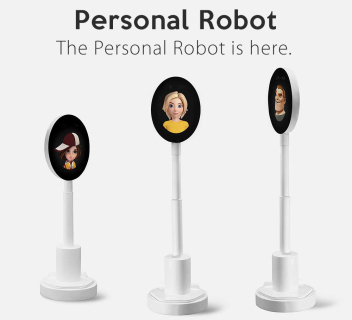 Last week, the National Transit Highway Safety Administration released a statement saying the artificial intelligence system in Google’s self-driving car legally qualifies as a driver in the US, therefore meeting all safety standards for driving on public roads—without a steering wheel or conventional brake pedal.
Last week, the National Transit Highway Safety Administration released a statement saying the artificial intelligence system in Google’s self-driving car legally qualifies as a driver in the US, therefore meeting all safety standards for driving on public roads—without a steering wheel or conventional brake pedal.
This marks the first of many huge steps toward streamlining autonomous cars, robots, and other various products into becoming household standards —like AI assistant, Siri.
So what exactly is AI? How will cognitive tech affect our businesses? What happens when machines are faced with ethical decisions? If questions like these have crossed your mind in the past, Randi sat down with Duy Huynh, CEO of Autonomous AI, the creators of the first Personal Robot shipping this year, and Mikhail Naumov, the President and Chief Strategy Officer of DigitalGenius, a platform which uses AI and natural language processing to enable fully automated, human-like conversations for business to discuss how AI works:
DUY HUYNH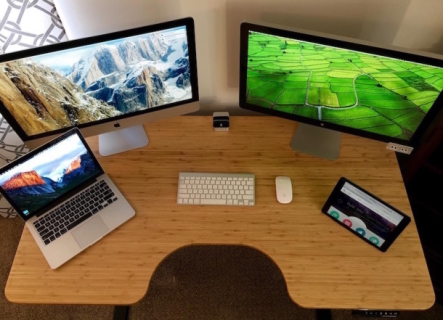 – CEO of AUTONOMOUS AI
– CEO of AUTONOMOUS AI
“We had a couple of influencers tweet about us and saw a huge increase in sales.”
“We are focused on putting AI to work for you. Most of us spend ½ of our life at work.”
“AI is a way that automates a lot of things for you.”
“20 or 30 years ago we had personal machines. The Personal Robot is the personal computer 2.0.”
“You have apps to choose from: Security, warehouse inventory tracking. Now you have 3 or 4 robots to fix human errors.”
“We have an office desk that shares the same NLP, speech recognition with Maya, our female prototype.”
“Why do we look at things like office desks with AI? Because your office desk is where you spend most of your time.”
“We are producing about 2000 units.”
“We build robots similar to how people build software. We want to get our product out the door as soon as possible.”
“We’ve had about 10,000 backers so far.”
“We want to think about how we can be more helpful to people.”
“When we people think of robots, they think of humanoids. That’s not reality.”
“We focus on functionality and make sure the robots can do the tasks that we build them to do.”
“My kids play with a cell phone, they don’t know what a desk phone is. As humans we’re going to learn new skills sets that we should be focusing on.”
“One of the tasks we’ve set up is inventory counting. It frees the employees to spend more to time on things that matter.”
“Our focus is not building robots that you see in movies. We want to help you do things that matter.”
“Interaction with a robot is important with deep learning.”
“We find AI is going to be more helpful to us than harmful.”
“It’s way too early to worry about the ethics of AI. It’s like worrying about the overpopulation of Mars. We’re not there yet.”
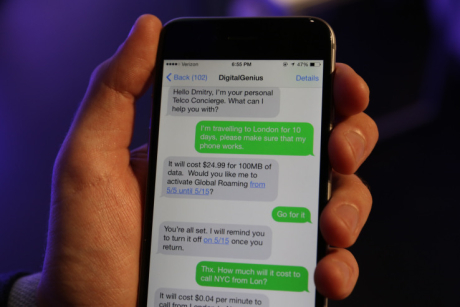 MIKHAIL NAUMOV — PRESIDENT & CSO of DIGITALGENIUS
MIKHAIL NAUMOV — PRESIDENT & CSO of DIGITALGENIUS
“Celebrity endorsement isn’t as cool as a competitor using our product. We’re on the B2B side.”
“We’ve all called up and talked to a robotic voice that might or might not have been able to help us. DigitalGenius is making that all go away.”
“Consumers are abandoning the phone to text. The problems that exist is there’s a new influx of demand. Brands are going to be left out.”
“We thought that the application of AI would be practical to businesses.”
“We do not build a chatbot that exists on its own. We create an interface to talk to customers correctly.”
“NLP is an area of focus and study that’s been around for decades.”
“NLP is a rule-based approach to train a computer to learn.”
“The traditional NLP approach has been abandoned by deep learning. It allows us to take historical chat logs from a brand and export those to train.”
“When a new tweet comes in, if it knows the answer correctly, it goes through our system first before sending it to an agent.”
“The first electric BMW wanted a technology as innovative as their car so they deployed our tech.”
“Siri is cool because it helps distribute to the channel itself. But most users won’t use something twice if it doesn’t work for them.”
“A search is not always what you’re looking for when asking a question.” #Siri
“There’s a human agent on the other side though they may not be engaged because our AI can help so thoroughly.”
“Not many of us nowadays know how to ride a horse. That’s exactly how we’re going the way of driving. It will become a hobby.”
“Before computers we had the abacus and people were worried about jobs. But nothing happened.”
“You have people answering the same question thousands of times a day. The human is not using all of their cognitive abilities. A computer can free up humans to have real conversations and unlock time and potential.”
“Robots don’t have to look like robots. Technology is becoming invisible and happening in the background.”
“Customer service won’t exist if tech and brands work together where no one has to make a query.”
“There’s no concrete answer for the ethics of AI. If today AI is being used to make life efficient, you have to look at where it all leads.”
“There will be regulators that will be involved in the ethics of AI.”
“The challenge you have with a fully autonomous AI app is sometimes it just doesn’t work.”
“It’s important to build a platform for humans to use AI in daily life.”
Join ‘Dot Complicated with Randi Zuckerberg’ next Wednesday when Big Data gets human. Only on SiriusXM Business Channel 111, 12pm ET/9am PT.
February 12, 2016
7 Last Minute Tech Gifts for Your Valentine

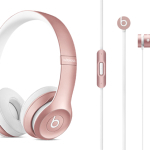 1.
Rose Gold Headphones
($299.95) or
ear phones
($99.95)
1.
Rose Gold Headphones
($299.95) or
ear phones
($99.95)Rose gold is romantic and says love over like. Listening to music playlists filled with love songs for Valentine’s will fill his or her heart with joy.
——
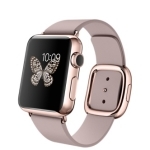 2.
Apple Watch
($249 – $1,250)
2.
Apple Watch
($249 – $1,250)Wearing something on your wrist from your Valentine means you’ll always remember him or her. When they call you, you can receive texts, video chats and stay in touch to keep the romance alive.
——
 3.
Engraved Gold or Pink iPod Shuffle
($49)
3.
Engraved Gold or Pink iPod Shuffle
($49)Receiving an iPod Shuffle with an “I love you” engraved is something that will not wear off. You can select music just for the two of you.
——
 4.
Pixel Heart Heat Changing Mug from ThinkGeek
($9.99)
4.
Pixel Heart Heat Changing Mug from ThinkGeek
($9.99)This cute tech gift won’t break the bank and you’ll think of your sweetheart when you have your morning coffee. Once the mug is filled up with warm liquid, the heart will start flashing.
——
 5.
Amazon Echo
($179.99)
5.
Amazon Echo
($179.99)This bestselling gift will fill the room with 360 degrees of music from Prime Music, Spotify, Pandora, iHeart Radio, Tune in, and can even control the lights in the room, which is perfect to change the ambiance to a mood for love.
——
 6.
Bluetooth Beanies
($29.99)
6.
Bluetooth Beanies
($29.99)This Bluetooth beanie hat will keep your loved one’s head warm, while still staying in touch. It’s perfect for a cold winter day, or a day on the ski slopes.
——
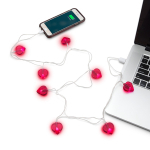 7. iPhone charger with 8 hearts ($14.99)
7. iPhone charger with 8 hearts ($14.99)Charging your phone will always make you think of love with this cute charger with 8 LED lights. You’ll be thinking of the Power of Love.
Happy Valentine’s Day!!!
——
List compiled by Online Dating Expert and author of Perils of Cyber Dating, Julie Spira.
February 10, 2016
Radio Recap: Digital Dating & Offline Love

Now that over 100 million people are using mobile dating apps—with over 50 million users using Tinder alone!— online dating is now a $2 billion dollar industry. And now that using technology to find a date has now become the most popular way for singles to meet, mobile dating is expected to be a $600 million dollar industry by 2017. So in honor of Valentine’s Day this coming Sunday, Randi sat down with Thomas Edwards, Professional Wingman, and Julie Spira, online dating coach and author of the recently re-released best seller, The Perils of Cyber Dating: Confessions of a Hopeful Romantic Looking Online for Love.
“Our primary focus is helping people develop their social skills.”
“A lot of people compare me to HITCH.”
“I wanted to be a video game producer but found something that better fit my personality.”
Being someone who has had their fair share of terrible relationships I realized there was a lot of growth I had to do first.”
“I was at SXSW and meeting tons of people. I helped one guy get a date with a girl and it all clicked.”
“I went to bars and looked for people who looked like they were having trouble meeting people and turned them into clients.”
“Once people see results, it’s hard to resist the business.”
“What goes through your mind when you see a lovely lady?”
“ A lot of people think it’s what you say, but it’s actually how you say it.”
“I teach the Three Cs: Context, Confidence, and Content.”
“The more context you have, the easier it is to start the conversation.”
“Amy Cuddy did a great TedTalk about confidence.”
“I always say approach a group of three women, because the other two can talk while the guy works his magic.”
“Three women go out with me, I help them to become more approachable and be wingwomen for each other.”
“The Confidence Lab helps people develop peak performance in social situations.”
“SOLD is my acronym to become instantly approachable: Smiling, Open body language, Listening, Direction.”
“Women who smile more become three times more approachable. Guys who smile less are more attractive.”
“You can see who is the most interesting by where everyone’s feet are pointing.”
“If you have an empty date card, you have a bad dating profile.”
“A man that has two spelling errors in his profile is 14% less likely to receive a positive response.”
“Don’t post selfie pictures. They don’t make you look your best.”
“A blurry picture doesn’t pop.”
“Don’t look like you’re in a LinkedIn profile.”
“Ladies, please wear red. Red is the color of love and passion. It’s also the color of a stop sign.”
“If you wear a little black dress you’re going to look like every other girl.”
“The guys spend more money on the dates that wear red.”
“People get nervous. We all wish for truth in advertising in online dating.”
“People say they’re tall or weigh less. We hop over to Facebook and Instagram to see if the online dating photos match up.”
“Don’t only post head shots with no full-length shots.”
“Show a great snapshot of who you are because you’ll be found out through social media.”
“If you’re new in a relationship one red rose or tulips can go a long way.”
“Not everyone gets the experience to fall in love at first sight, but I did.”
“It’s my goal to help other singles through my stories.”
“If anyone’s ever thought about the one that got away, reach out to them. Social media allows it now more than ever.”
“Find your 1 in 100,000,000 online”
Join ‘Dot Complicated with Randi Zuckerberg’ next Wednesday, February 17th, when Autonomous and Digital Genius join the show to talk about artificial intelligence. Only on SiriusXM Business Channel 111, 12pm ET.
February 5, 2016
Top 5 Baby & Parenting Apps
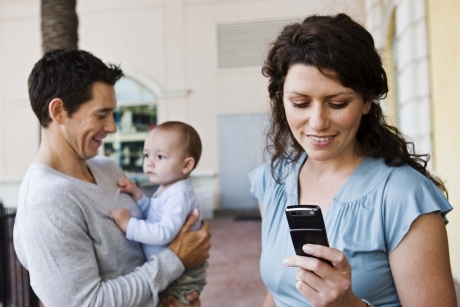
The Bump | Week-by-Week Pregnancy and Newborn Tracker – By The Knot Inc.
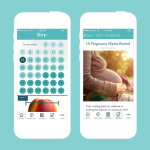 This is a true gift for all the pregnant ladies and current mothers. The Bump offers real-time parenting advice through a feed of content personalized to the week of your pregnancy or your newborn’s development. With this app, you can get all the information you need including videos, calendar to-do items, a community of moms, your own belly photos and supportive articles created by our own expert editors. For both my pregnancies I looked for advice and insight from The Bump and their platform has been an amazing way for me to learn about what I should expect or the things I want to know about my baby. The updates and information I receive every week are so spot on with my children and help me understand the stage of development they are in, which is so essential of raising a happy baby or child.
This is a true gift for all the pregnant ladies and current mothers. The Bump offers real-time parenting advice through a feed of content personalized to the week of your pregnancy or your newborn’s development. With this app, you can get all the information you need including videos, calendar to-do items, a community of moms, your own belly photos and supportive articles created by our own expert editors. For both my pregnancies I looked for advice and insight from The Bump and their platform has been an amazing way for me to learn about what I should expect or the things I want to know about my baby. The updates and information I receive every week are so spot on with my children and help me understand the stage of development they are in, which is so essential of raising a happy baby or child.
The App has a recent feature update offering real answers from The Bump Editors, Experts, and parents like you covering questions about trying to conceive, pregnancy and parenting. The Bump is the first Pregnancy App on the Apple Watch. Have your pregnancy and parenting guide at your fingertips and put yourself at ease. The Bump makes it easy and enjoyable for the everyday parent.
The Bump is Free to download.
Baby Connect (Activity Logger) – By Seacloud Software LLC
 Ever wonder what your baby is doing while you’re away? A million questions go through my mind and I ask myself when baby last ate, what is my baby currently doing, when was their last diaper change, and more! As a parent you cannot help but think of your precious little one when you are not there. Baby Connect is a perfect solution to track your baby’s information in an easy interface with unlimited data.
Ever wonder what your baby is doing while you’re away? A million questions go through my mind and I ask myself when baby last ate, what is my baby currently doing, when was their last diaper change, and more! As a parent you cannot help but think of your precious little one when you are not there. Baby Connect is a perfect solution to track your baby’s information in an easy interface with unlimited data.
Anyone can record feedings, nursing, naps, diapers, medicine, vaccine and growth tracking, milestones, pumping, and also the baby’s mood, temperature, what kind of game he’s playing, his gps location, and attach pictures. This App really has it all! I use this App to synchronize information with my spouse, nanny, daycare, and when they go to grandma’s house for the day. I love that I can see real time updates of what is going on while I am at work. Every parent should have this App!
Baby Connect can be purchased for $4.99 in your App store.
Cozi Family Organizer – By Cozi Inc.
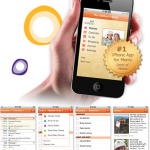 Take control of your household by organizing your tasks into daily routine checklists while keeping everyone in the loop. Staying organized is my thing, and this easy to use App makes life that much easier. Cozi Family Organizer features a family calendar, shopping list, to do list, family journal, and a recipe box. I personally bought the Cozi Gold because I wanted the premium features and add-free version. But the free version works great as well. I use Cozi App every day to remember something, add a new appointment I made, or update my shopping list. Cozi is very useful for the family keeps everyone on track so we never miss an appointment or family gathering!
Take control of your household by organizing your tasks into daily routine checklists while keeping everyone in the loop. Staying organized is my thing, and this easy to use App makes life that much easier. Cozi Family Organizer features a family calendar, shopping list, to do list, family journal, and a recipe box. I personally bought the Cozi Gold because I wanted the premium features and add-free version. But the free version works great as well. I use Cozi App every day to remember something, add a new appointment I made, or update my shopping list. Cozi is very useful for the family keeps everyone on track so we never miss an appointment or family gathering!
Cozi Family Organizer is Free to download. Premium version available for $19.99 for the whole year.
Spending Tracker – By MH Riley Ltd
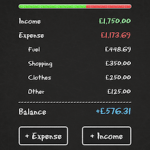 Following a budget and managing your finances has never been so easy. Planning where your money goes allows you to always have enough money for what you need and what is important for the month. This App is Free to download and easy to use with a simple interface. The user enters in their expenses and income to get instant control of their spending and visual reports. I use this App religiously as I want to effectively track my expenses and budget my money. Since I have downloaded the App I have become a wiser spender, minimized my impulse shopping habits, saved triple the amount of money in my different savings accounts, and I can visually see my summary review and reports by category. When you are a parent, it is so hard to save at times with the cost of raising a child and the fact you want the best for them. I have a boy and a girl, believe me I know! My priorities have changed and aside from saving money and buying my children the necessities, I want to show them the world. Spending Tracker App lets me know how much extra money I have each month after the bills are paid. Easy to make this App a daily habit and see where your money goes.
Following a budget and managing your finances has never been so easy. Planning where your money goes allows you to always have enough money for what you need and what is important for the month. This App is Free to download and easy to use with a simple interface. The user enters in their expenses and income to get instant control of their spending and visual reports. I use this App religiously as I want to effectively track my expenses and budget my money. Since I have downloaded the App I have become a wiser spender, minimized my impulse shopping habits, saved triple the amount of money in my different savings accounts, and I can visually see my summary review and reports by category. When you are a parent, it is so hard to save at times with the cost of raising a child and the fact you want the best for them. I have a boy and a girl, believe me I know! My priorities have changed and aside from saving money and buying my children the necessities, I want to show them the world. Spending Tracker App lets me know how much extra money I have each month after the bills are paid. Easy to make this App a daily habit and see where your money goes.
Spending Tracker is Free to download. Pro version available for in-app purchase.
Healthy Recipes – By SparkRecipes
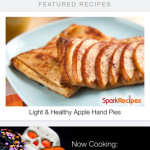 For my family having a balanced eating lifestyle is one of the most important aspects of our day. Mood is food, and what we eat will make us or break us. Healthy Recipes has over 500,000 recipes from the world’s largest healthy recipes website, making it fun to try something new. My 4 year old daughter already understands the importance of eating healthy and the value of exercise, while my 2 year old son loves to eat whatever mommy makes. While most of my recipes are self-made or passed down from generations, I still love to try something new or get inspiration from a recipe. Just like all aspects of my daily routine, I plan what I will eat for the day and track my nutrition. Twice a week I meal prep all family lunches and dinners to make sure the food we eat is healthy, balanced in terms of food category, and to ensure we reach our daily intake of nutrients and proteins. At first this was not easy, but with the help of my personal trainer and Healthy Recipes App, I was able to control the things I cook and think about what we are eating, before we eat it. Little eaters will become less picky when you are excited and put love into each meal. I highly recommend this App if you are looking to cook healthy and keeps things interesting at the table.
For my family having a balanced eating lifestyle is one of the most important aspects of our day. Mood is food, and what we eat will make us or break us. Healthy Recipes has over 500,000 recipes from the world’s largest healthy recipes website, making it fun to try something new. My 4 year old daughter already understands the importance of eating healthy and the value of exercise, while my 2 year old son loves to eat whatever mommy makes. While most of my recipes are self-made or passed down from generations, I still love to try something new or get inspiration from a recipe. Just like all aspects of my daily routine, I plan what I will eat for the day and track my nutrition. Twice a week I meal prep all family lunches and dinners to make sure the food we eat is healthy, balanced in terms of food category, and to ensure we reach our daily intake of nutrients and proteins. At first this was not easy, but with the help of my personal trainer and Healthy Recipes App, I was able to control the things I cook and think about what we are eating, before we eat it. Little eaters will become less picky when you are excited and put love into each meal. I highly recommend this App if you are looking to cook healthy and keeps things interesting at the table.
Healthy Recipes is Free to download.
Vanessa Miller is a buyer for baby product distributor, Best Babie. Learn more about Vanessa at: http://www.vmtechygirl.com
February 4, 2016
Girls Make Games Top 5 Female Created Games
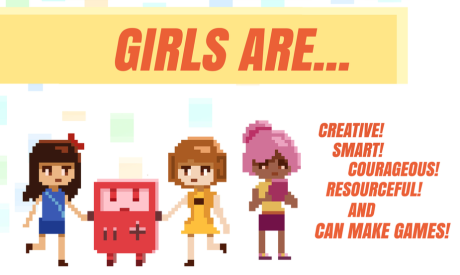 Girls Make Games runs game workshops around the world where teach girls how to program their own games,” says GMG founder and CEO, Laila Shabir.
Girls Make Games runs game workshops around the world where teach girls how to program their own games,” says GMG founder and CEO, Laila Shabir.
“The US is our primary market but we’ve been to Taiwan, Bangledesh. With the average age being 12.”
“Girls start out in the morning playing games by other people then, later in the day, create their own game.”
“No one is ever turned away for a lack of funds.”
“If you answer questions right in class you win gold to buy more time to build your game.”
“Finding 5 apps designed by women was actually a challenge. There are women on teams but not really creating their own apps.”
Here are Laila Shabir’s Top 5 Female Created Games:
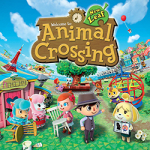 5) Animal Crossing: New Leaf: 50% of the development team was women and is Animal Crossing’s best-selling game to date. I was introduced to this game by our campers.
5) Animal Crossing: New Leaf: 50% of the development team was women and is Animal Crossing’s best-selling game to date. I was introduced to this game by our campers.
4) Journey: Two women produced this game. This game will make you cry. The visuals are so moving. It’s on PS3.
3) Uncharted 2: This is by Gateway. The lead on this game did a fantastic job writing it. If you love action and adventure movies this is the game to go to.
2) Portal: The lead designer is a woman as is the lead character. Portal is actually a challenging, quirky, funny game. It’s a puzzle game where you build portals.
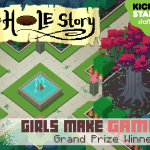 1) The Hole Story: Written, designed, programmed by Girls Make Games campers. You play as a little girl and have your best friend is a shovel.
1) The Hole Story: Written, designed, programmed by Girls Make Games campers. You play as a little girl and have your best friend is a shovel.
To learn more go to Girlsmeetgames.com
20 camps around the country in 2016. Currently students are making a murder-mystery game.
February 3, 2016
Radio Recap: Baby Tech
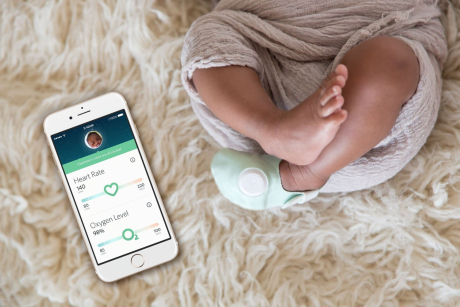
Since early January I’ve been reporting on the many trends of this year’s Consumer Electronics Show: Drones, smarthome appliances, wearables—but one trend I was most surprised to see make such an impact was that of Baby Tech. From Fisher Price’s cool Code-a-Pillar that teaches coding for kids, to the hospital grade Owlet baby monitor that alerts new parents to their baby’s vitals while sleeping, baby tech was certainly pulling no punches in its CES premiere. I also had the honor to co-host the Best in Baby Tech Awards presented by pregnancy and parenting website, The Bump. So in honor of the upswing in baby tech trends, my guest today—along with my co-host for The Bump’s Best in Baby Tech Awards—was The Bump site director Julia Wang:
“The Bump is the platform for Millennial parents. We have over 7 million parents looking for solutions on the site.”
“It’s a natural progression. We’re seeing more manufacturers expand with tech innovation.”
“I was at People Digital covering celebrities. As a parent myself, this was a passion of mine. I knew The Bump’s journey was more in line with me.”
“60% of our readers are first time parents and 80% are on mobile. They’re tech-savvy.”
“We launched an Apple Watch app and regular app to track pregnancies.”
“A lot of the worry with a first-time parent is true. You need help.”
“Safety is the top of most readers’ minds. That whatever is happening in utero is safe. “
“Two months is a long time not to see your doctor when you’re pregnant. We’re here to help ease the fears.”
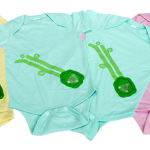 “MiMo is a tracking device that’s attached to a onesie. It tracks the sleeping process. MiMo was a game changer.”
“MiMo is a tracking device that’s attached to a onesie. It tracks the sleeping process. MiMo was a game changer.”
“How cool is it that we’ll see a smart onesie that can track vitals and also adjust the temperature and bottle warming.”
“Telemedicine connects you with an entire group of doctors that can give you medical advice without ever going to an office.”
“Starling tracks the number of words you say to your baby throughout the day. There is proof that the more words baby hear, the faster they learn.”
“If you use trackers to help your baby grow and develop, just make sure you’re mindful of how much stock you put in them.”
“I can see an adult using an iPotty. However it raises a red flag for me. What’s the lesson you’re trying to teach? It’s the wrong reward and message.” 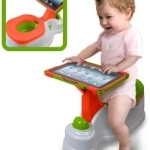
“Over the last few months a huge hack went into their database of parents. If the information you have in these devices safe?
“Every nursery has a baby monitor usually hooked up to a smartphone. They require extra security.”
“If a baby monitor has shown that security is number one, it will be a huge game changer.”
“There are things parents can do to push manufacturers to create reliable and safe products.”
“We get hundreds of pitches a day. We’re advocating for our parents. We like to get the products into real testers, moms and dads, to see if these products really work.”
“First and foremost, I’m a mom.”
“Our staff is a relatively young staff. We have people who are passionate about parenting, but aren’t parents.”
“We have a new product called Real Answers to ask real questions to real experts we’ve sourced and vetted.”
“We bring in different voices. Whether it’s parent bloggers with different perspectives on parenting or experts.”
“Dads are more involved than ever before.”
“We really try to portray the modern family. Whether it’s IVF, surrogacy, same-sex partners. We love to share their stories with other families.”
“In the fertility and pregnancy we had a product called Univfy that helped give more information and data.”
“We’ve seen a lot of innovation in car seats. SensorSafe syncs with your car engine it alerts that your baby is still in the car and you have to take them out.”
 “Freemie Freedom Collection Cups allows the mom to pump hands free.”
“Freemie Freedom Collection Cups allows the mom to pump hands free.”
“Hatch Baby was the smart baby changing pad to see how much your baby is taking in in terms of feeding.”
To learn more, go to TheBump.com , The Bump App on iOS & Android
Join ‘Dot Complicated with Randi Zuckerberg’ next week when online dating coach, Julie Spira, joins the show just in time to find Valentine’s Day love! Only on SiriusXM Business Channel 111 at 12pm ET!
February 2, 2016
HGTV Female Entrepreneur Marnie Oursler
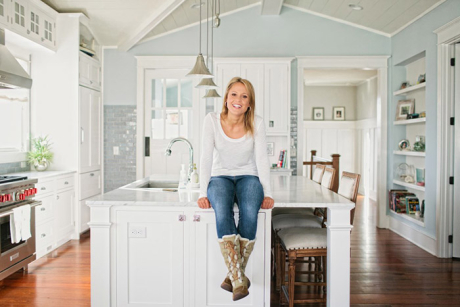
If you’re a female entrepreneur in today’s world, you know it’s an uphill battle. Being underestimated and overlooked is part of the game, and sometimes all you have is your own determination to bank on. I’ve been there. I’m a female entrepreneur in the male-dominated building and construction industry.
But not only did I do it, I did it big — I own a successful multimillion dollar custom home building business on the east coast. I did it with passion, hard work, drive, innovation, and collaboration – so much so that even HGTV took notice and decided to film a pilot show about my work. But more on that later.
My path to get here wasn’t easy. Growing up, I often found to ways to break through the barriers and find innovative ways around the rules. For example, when I was in 6th grade, I wanted to play soccer. But there was just one problem: There was no girls soccer team. So I found a way to break through the barrier — I tried out for the boys team — and made it.
I grew up in a family of builders. My dad was a builder and I followed him around a lot — picking up trash, sweeping out houses, organizing lumber. I got to know construction from the ground up, which is the best way to learn it.
After I graduated college, I got paid $11/hour as a real estate assistant, where I got to visit the kind of houses I never knew existed—gorgeous, sunlit summer homes that made my jaw drop. I decided I needed one of those. Bad. I would do whatever it took.
So for two solid years, I worked odd jobs and ate peanut butter sandwiches (jelly was a luxury I couldn’t afford), saved every penny, and then stayed up late to study the market trends, the data — just waiting for my chance to buy into the market. And I found it: A tiny, tired looking bungalow that resembled a teepee, and inside, brown paneling, harvest gold appliances, slanted walls, green shag carpet. I bought it for $240,000. It was a total fixer-upper, and I maxed out every card to buy it and rebuild it myself. My dad said, “You’re crazy.” I told him I’d prove him wrong.
Nine months later, I sold that house for $350,000. I reinvested that money right away. From there I was hooked.
I launched my custom home building business in 2007…which also happened to be the year of the worst housing crash in U.S. history. Just my luck! I couldn’t afford to hire many workers, so I did a lot of the building myself. Everyone thought I was nuts.
Despite my hard work, I was quite often doubted, disregarded, overlooked. Let’s face it: I was a woman in her 20s, built like a ballerina in a business completely dominated by dudes. I can’t tell you the number of times people approached me on job sites to ask me, “Where’s your dad, sweetheart?” and “Are you the decorator?” So I worked really hard to create meticulous plans when bidding for new business. My lowest point came when I found out prospects were taking my bids to competing builders instead. I almost gave up.
If no one would accept my bids for business, I was going to have to start bidding on myself. Which is exactly what I did.
I built a new home – but this time, I designed it myself, instead of using an architect’s design. It was stunning: It had a custom oversized front door, wide-plank wood flooring, impeccable interior trim details, 8′ solid wood doors, cathedral ceilings with exposed beams, a sea glass palette. When you walked in the door, the ocean was the first thing you saw, and an inverted floor plan let you view it from the kitchen as well. It was bright, airy, fresh, with a big front porch and a rooftop deck.
When the house was finished, I invited the entire neighborhood over for a big summer blowout. Four-hundred showed—and that’s where everything changed.
After that day, word spread like wildfire. I got referral after referral. I didn’t even have to submit bids anymore; business was coming to me. And the best part? They didn’t just want me to build the home; they wanted me to design it, too.
Here’s what else set me apart from the pack and helped launch the innovative success behind Marnie Custom Homes:
I earned my MBA from Duke University.
I started using energy-efficient practices.
I began using reclaimed and recycled material to add character and make my clients’ homes unique.
I built one of the first 95 percent American-made homes in the country, using equipment and materials sourced domestically.
To date, I have 41 homes under my belt and a thriving business, and the respect of my (mostly male) colleagues. I’ve won numerous homebuilding and entrepreneurial awards. I’m proud to say we’ve been at the forefront of innovation since I started the company in 2007. Our innovative use of materials, impeccable craftsmanship, design sense, and unparalleled work ethic have earned Marnie Custom Homes a thriving and award-winning business and has kept us on the cutting edge of competitive custom home building in Delaware. We continue to revolutionize the industry with our fresh approach to established and innovative building practices and processes. I couldn’t be more proud.
And now I’m embarking on my greatest adventure yet — my own network TV show based on my business. “Big Beach Builds” on HGTV centers on my journey making outdated beach homes a new work of art. It’s hard to overlook and dismiss any entrepreneur who is nationally recognized for her success in the industry, no matter her gender. I’m so excited to share my process with a national audience, and hope that other female entrepreneurs are inspired by my story to take that leap of faith and bet on themselves to win.
To learn more about Marnie, go to www.marnieinc.com

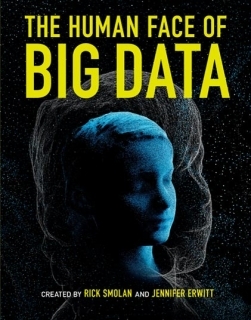 RICK SMOLAN
RICK SMOLAN
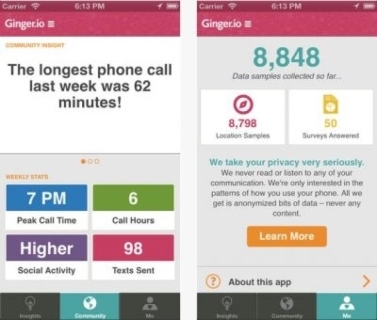 ANMOL MADAN
ANMOL MADAN
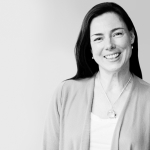 ALISON JONES
ALISON JONES
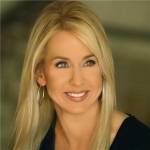 TAMARA MCCLEARY
TAMARA MCCLEARY
 THOMAS EDWARDS
THOMAS EDWARDS



